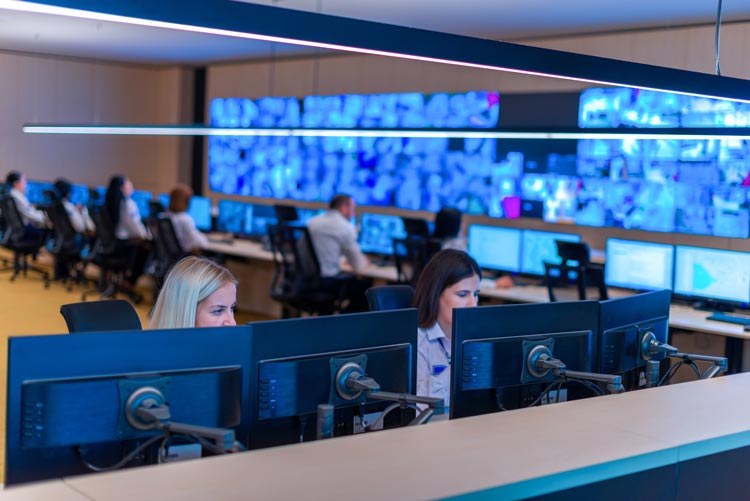Our Executive Protection has always been using protective intelligence in all our Executive Protection details for the last 20 years.
At World Protection Group (WPG), we believe in using protective intelligence to do our job better and protect our clients from those who may wish to do them harm. We analyze threats using this a sophisticated intelligence system (60,000 live open-source news feeds, identifies 50 types of risks, and include twitter) and devise an actionable protection plan. We have prevented our clients from being hurt or killed from drug cartel attacks, protects, and civil unrest with using protective intelligence.
What is Protective Intelligence?
Protective Intelligence is the process we use to gather the information that identifies threats and assesses the level of risk associated with them. Without this intelligence, agents can only react to immediate dangers instead of proactively preventing danger. With protective intelligence, agents have the real-time information necessary to deal with potential threat events by avoiding them or deterring them from keeping our clients both safe and secure.
Protective intelligence is all about being proactive and preventing a person from mounting an attack. These programs are based on the theory that the risk of violence will be mitigated if a suspect, their ability to attack, and their willingness to attack can be identified and prevented before they’re able to get to the client.
A well designed protective intelligence program has several crucial components and functions, including threat assessments, countersurveillance and surveillance, investigations, and the analysis of the findings.
When it comes to threat assessment, protective intelligence is critical. Without the necessary background information and putting the threat into context, the actionable plan may be ineffective. Gathering information about potential risks is key to devising a plan.
Why is it Important?
As you have just learned, protective intelligence is necessary for the protection of our clients. Consider a simple bodyguard. Typically, a bodyguard is hired to protect the client against immediate threats.
However, when the events already break out, they can be difficult to stop. If the bodyguard had done the necessary research to gain intelligence about a specific venue or potential threats proactively, the risk would be mitigated as they could plan accordingly to prevent an evil person from even coming near their client.
Let’s, for a second, think about all of the celebrities and their bodyguards we see in the tabloids. When you see a star attacked by a “fan,” it’s typically because the bodyguard is inexperienced, no formal training, and did not perform the necessary intelligence and pre-planning needed to protect their client. You’ll see tons of footage on youtube of bodyguards walking their clients through mobs of fans and those with bad intentions. The more people bombarding the celebrity, the more likely the chances are of an attack.
If the bodyguard learned about the situation beforehand, these dangerous situations could be prevented. For example, merely mapping the routes and planning escapes before taking the celebrity to an event could mean the difference between their safety and harm.
How We Use Protective Intelligence for Security Post Orders and Creating Operating Procedures
What are a Security Post Order and operating procedures?
A security post order or operating procedure includes open-source intelligence information we gathered, along with the risk/vulnerability assessment, we then include security recommendations and methods, and emergency contacts for each specific detail.
Open-source intelligence gives clients information on the threats they could be facing in specific locations. For example, if a businessman is traveling to a new country, this information will tell him what to expect upon landing. 70% of all intelligence is collected through open-source intelligence.
A threat assessment is the analyzation of the probability of experiencing threats, along with the danger level of the area. This means if a high net worth individual is traveling to another country that’s had recent civil unrest, they will know what level of threat they can expect upon entering the region. It gives the protection detail a plan on how to navigate around any areas where the danger is.
The security recommendations tell our clients how to plan for and deal with the threats identified in the report. They must avoid these threats, and we detail how they can do that as best as possible.
The emergency contacts listed include whom to contact if there is an emergency. It contains the numbers and addresses of consulates, embassies, hospitals, pharmacies, and more in the city our client is traveling to.
These Security Post Orders and security plans will be essential for our clients who are traveling out of the country. Those who do not have a background in security will value the ability to learn how they can stay safe in an unknown land. While we never recommend traveling to high-risk locations without a security team, these reports can help them mitigate the risk of an attack. All of the Post Orders and procedures must be kept in encrypted folders and files.
The Post Orders and operating procedures must be updated regularly based on the protective intelligence and threat level.
WPG Uses Protective Intelligence for All Protection Operations
When we are hired to protect a celebrity or high-net-worth individual, we often begin the process by checking the protective intelligence and developing a threat assessment. Using this valuable information, we can better protect our clients and make sure that the possibility of harm is eliminated. In being proactive, we can avoid threats before there are any attempts.
For example, if we are traveling to a different country with our client and we know that there has been recent civil unrest, we may choose to land at a different airport or city so that we can remain discreet. If our client is a well-known business person, we will do our research and teach them how to stay anonymous when traveling to a place where they might have unknown enemies.
We believe that risk mitigation is the safest option for our agents and our clients. After protective intelligence, we can determine whether or not an individual is a threat, and to what degree. We then use this information to come up with the best course of action that will ensure our client’s safety.
Regardless of the type of actionable strategy we choose, we will continuously be monitoring and reassessing the situation to make the best choices when it comes to protection.








